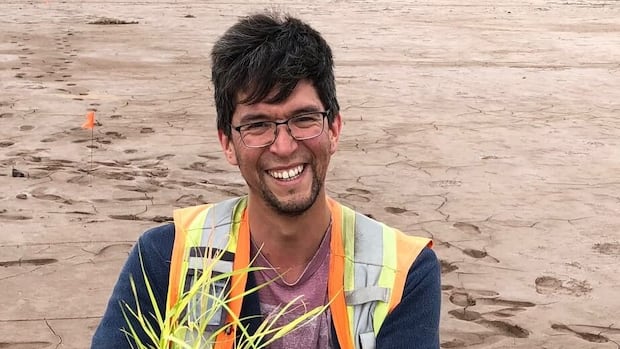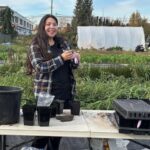New BrunswickA Mi’kmaw land trust has purchased a southeastern New Brunswick salt marsh near Dorchester for protection and conservation by Amlamgog, or Fort Folly First Nation.Land deemed valuable for its climate role and sacred medicineJennifer Sweet · CBC News · Posted: Nov 14, 2025 5:00 AM EST | Last Updated: 2 hours agoListen to this articleEstimated 5 minutesThe audio version of this article is generated by text-to-speech, a technology based on artificial intelligence.This 25-hectare salt marsh was acquired with funding from an Indigenous-led federal conservation program. (Submitted by Lyle Vicaire)Some healthy marshland on Dorchester Cape, near the confluence of the Petitcodiac and Memramcook rivers, is being turned over to Fort Folly First Nation, or Amlamgog, for protection and conservation.“The more we can now protect … the better we as a society would be able to adapt through the climate crisis,” said Lyle Vicaire, founder of Sikniktuk Climate Adaptation, a conservation initiative through which the land was purchased and donated.The 25-hectare salt marsh, backed by dikes and fronted by mudflats, was bought using federal funding from the Indigenous-led Area-Based Conservation Program, he said.Vicaire, an environmental scientist and consultant from Elsipogtog First Nation, is working on his master’s degree at the University of New Brunswick and studying salt marsh restoration techniques.Salt marshes are valuable natural barriers to mitigate the effects of climate change, he said.A salt marsh acts like a big sponge, soaking up and releasing tidewaters, and helping to reduce erosion from waves and storm surges.Salt marshes absorb storm surge and store carbon, which help mitigate the effects of climate change, says environmental scientist Lyle Vicaire. (Submitted by Lyle Vicaire)“Many of these coastal habitats are under threat because of sea level rise,” Vicaire said, including marshes in Sikniktuk, the Mi’kmaw district encompassing eastern New Brunswick.As the sea level rises, a salt marsh needs room to grow inland, but usually cannot, he said.“People build right next to it,” Vicaire said. “There will be buildings, roads or boardwalks. Any kind of infrastructure just usually stops the coastal habitats from being able to adapt.”As a result, the marsh can drown and disappear, also losing its ability to store carbon, he added.“We’re losing salt marshes in many regions around the world,” Vicaire said.Vicaire is involved in an effort to conserve salt marshes throughout the Mi’kmaw district of Sikniktuk, most of which, he says, are at risk. (Parks Canada)Sikniktuk Climate Adaptation is working to acquire up to 100 hectares along the coast for a Mi’kmaw land trust. This is the first land purchase to be finalized, Vicaire said.“It feels pretty good.”Acquiring land is difficult, Vicaire said, because other non-governmental organizations are also competing for it.“We’ll be able to closely protect that area now,” said Nicole Porter, Amlamgog cultural co-ordinator.Her role involves organizing workshops with elders and knowledge keepers in land-based learning and other culturally relevant subjects.She also works to identify culturally significant plants, animals and ceremony locations.The salt marsh is culturally significant because sweetgrass, a sacred medicine, grows there, she said.Porter is looking forward to bringing community members to the marsh, including children, to show them how to harvest it.“Any time that I can get out on the land or help others get onto the land to know where those medicines are, it’s beneficial for all of us,” she said.LISTEN | Protecting land on Dorchester Cape:Information Morning – Moncton7:05Conservation group donates salt marsh to Amlamgog (Fort Folly) First NationLyle Vicaire is the founder of the Sikniktuk Climate Adaptation Project.Porter said she often hears from community members who don’t know where they can go to harvest because they don’t want to trespass on private property and aren’t sure of their treaty rights or where Crown lands are located. “With this area we actually will know and we’ll be able to tell our community members, you can go out and harvest here and not have to worry about repercussions or anything like that,” she said.Vicaire is conducting research in the newly protected area as part of a bigger study of Sikniktuk coastal areas.“We believe the majority of our coastal land is under threat from sea level rise and coastal squeeze,” he said.“We think it might need some more conservation and more work.”The study involves taking samples of vegetation, soil and sediments and using sweetgrass to help identify salt marshes that are at risk of drowning, said Vicaire.“Sweetgrass is a plant that grows on the upper edges of salt marshes … on the perfect balance of salt water and freshwater,” he explained.In those conditions, it will contain high levels of coumarin, he said. That’s the chemical compound, also found in things like cinnamon and licorice root, that gives it its sweet smell.Vicaire is using sweetgrass to monitor the health of salt marshes across Sikniktuk, the Mi’kmaw district encompassing the eastern half of New Brunswick. (Submitted by Lyle Vicaire)By planting and monitoring sweetgrass in marshes throughout the region, Vicaire hopes to get an indication of which marshes are at risk of being flooded.Having this information could help make a case for more conservation, he said.Vicaire’s organization also works to restore salt marshes. It can take five to 10 years for a marsh to start recovering and 50 or more years for it to fully develop, he said.Vicaire sees this work and the recent land purchase as steps toward reconciliation. Conservation is a simply a traditional way of life for the Mi’kmaq, said VicaireWhen the land heals, people heal, he said.ABOUT THE AUTHORJennifer Sweet has been telling the stories of New Brunswickers for over 20 years. She is originally from Bathurst, got her journalism degree from Carleton University and is based in Fredericton. She can be reached at 451-4176 or jennifer.sweet@cbc.ca.With files from Information Morning Moncton
Salt marsh on Dorchester Cape to be protected by First Nation












